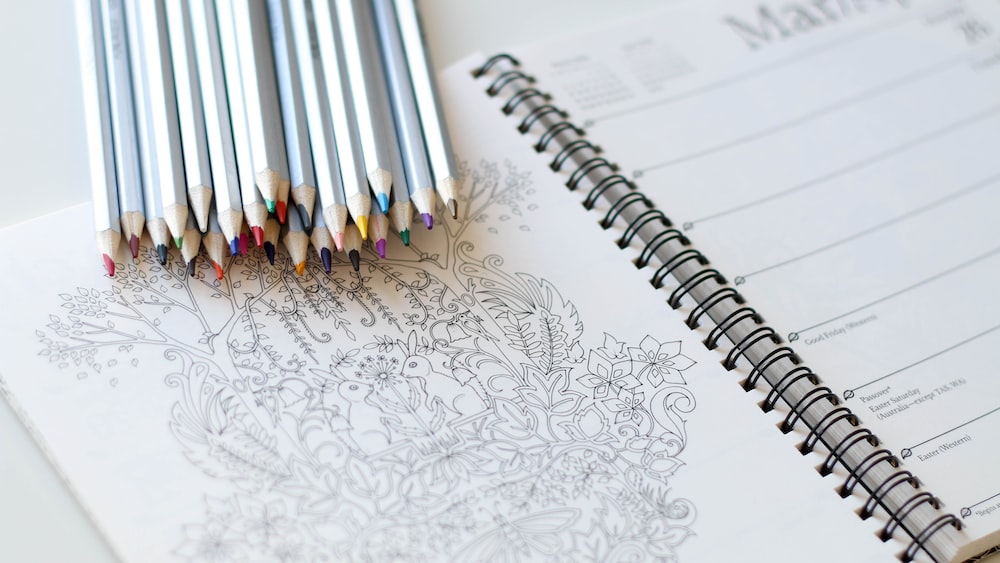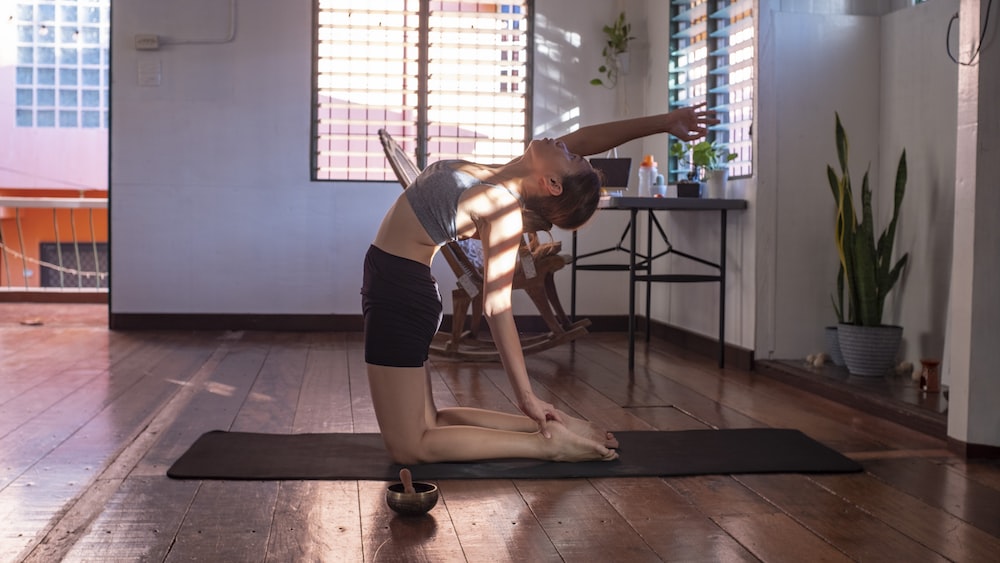15 Engaging Mindfulness Activities In The Classroom
Welcome to the world of mindfulness! In our fast-paced lives, it’s easy to forget the importance of being present and fully engaged in the moment. But did you know that mindfulness activities can make a huge difference in the classroom? By practicing mindfulness, students can improve their focus, reduce stress, and enhance their emotional well-being. In this article, we’ll explore 15 engaging mindfulness activities that can be implemented in the classroom, tailored to students of all ages.
From preschoolers to high school students, there’s a mindfulness activity for everyone. So, let’s dive into the benefits of mindfulness and discover some practical and enjoyable activities that can be easily incorporated into your lesson plans. Are you ready to transform your classroom into a mindful haven? Let’s get started!
Mindfulness Activities for Preschoolers
Introducing mindfulness to young children might seem like a daunting task, but fear not! There are plenty of age-appropriate activities that can help preschoolers learn to be present and aware. Let’s explore some of these fun and engaging activities that can be easily incorporated into your preschool classroom.
1. Deep breathing exercises
Teaching young children to take deep breaths is a fantastic way to help them learn to regulate their emotions and calm themselves when they feel overwhelmed. Start by having the children sit or lie down comfortably. Then, ask them to place one hand on their chest and the other on their belly. Instruct them to breathe in slowly through their nose, filling their belly with air, and then breathe out through their mouth. Repeat this process several times, encouraging them to focus on the sensation of their breath.
- Belly Buddies: Place a small stuffed animal on each child’s belly, and have them watch it rise and fall as they breathe. This visual aid can help children understand the concept of deep breathing.
Teaching young children to regulate their emotions and calm themselves can be done by breathing exercises, such as deep breathing, which can be enhanced by using visual aids such as stuffed animals.
2. Mindful listening walks
Taking a mindful listening walk is a simple and effective way to help preschoolers practice mindfulness. Begin by gathering the children and explaining that they’ll be going on a special walk to listen to the sounds around them. As you walk, encourage them to stay quiet and focus on the sounds they hear, such as birds chirping, leaves rustling, or footsteps on the pavement.
After the walk, gather the children in a circle and have a discussion about what they heard. This activity not only helps children develop their listening skills, but also fosters a greater appreciation for the world around them.
3. Finger tracing
Finger tracing is a calming and tactile way to help young children practice mindfulness. In this activity, children trace shapes or letters with their fingers while focusing on the sensation of their finger moving along the surface.
- Provide each child with a small tray of sand, salt, or sugar and encourage them to trace shapes, letters, or numbers.
- Alternatively, have them trace shapes or letters on their own body, such as tracing a heart on their chest or an “X” on their hand.
4. Guided imagery
Guided imagery is a powerful tool for helping young children relax and focus. Start by having the children sit or lie down comfortably in a quiet space. Then, read or tell a calming story that incorporates vivid sensory details, such as the feeling of the sun on their skin or the sound of waves crashing on the shore.

As you guide them through the story, encourage the children to use their imaginations to fully immerse themselves in the experience. This activity not only promotes mindfulness but also helps develop their creativity and listening skills.
5. Yoga for kids
Yoga is a wonderful way to introduce mindfulness to young children while also promoting physical activity. There are many kid-friendly yoga poses and sequences that can be easily adapted for the classroom. Start by teaching the children a few simple poses, such as:
- Tree Pose: Standing on one foot, place the other foot on the inner thigh or calf and raise the arms above the head.
- Cat-Cow: On hands and knees, alternate between rounding the back (cat) and arching it (cow), focusing on the breath.
- Child’s Pose: Sitting on the heels, fold forward and rest the forehead on the ground, arms extended in front or by the sides.
As the children practice these poses, encourage them to focus on their breath and body awareness. You can also incorporate guided imagery or storytelling to make the yoga experience even more engaging and enjoyable.
Mindfulness Activities for Elementary School Students
As students grow and develop, so do their mindfulness needs. Elementary school students can benefit from more advanced mindfulness activities that help them build on the foundation laid in preschool. Let’s explore some effective and engaging mindfulness activities for this age group.
6. Body scan meditation
Body scan meditation is a powerful technique that helps students become more in tune with their physical sensations and emotions. Start by having the students sit or lie down comfortably and close their eyes. Guide them through a mental “scan” of their body, beginning at the top of their head and working down to their toes. Encourage them to notice any sensations, tension, or discomfort they may feel in each part of their body.
As they become more aware of their body, remind the students to breathe deeply and focus on releasing any tension or discomfort they may be experiencing. This practice not only promotes mindfulness but also helps students develop a greater awareness of their bodies and emotions.
7. Gratitude journaling
Gratitude journaling is a fantastic mindfulness activity that can help elementary school students develop an attitude of gratitude. By encouraging them to regularly write down things they are thankful for, they can learn to focus on the positive aspects of their lives. This practice has been shown to improve mental health and well-being.
To implement gratitude journaling in the classroom, provide students with a notebook or journal, and set aside a few minutes each day for them to write down three things they are grateful for. You can also encourage them to share their thoughts with the class, fostering a supportive and positive atmosphere.
Encouraging elementary school students to practice gratitude journaling can help develop a positive attitude and improve mental health and well-being.
8. Mindful coloring
Mindful coloring is a simple yet powerful way to help students practice mindfulness and relax. It involves using coloring sheets with intricate designs, allowing students to focus on the present moment and the task at hand. Research has found that coloring can reduce stress and anxiety, and improve focus and concentration.

To introduce mindful coloring in the classroom, provide students with coloring sheets and colored pencils, crayons, or markers. Set aside some time during the day for students to engage in this calming activity, either individually or in small groups. You can also play soft, calming music in the background to enhance the experience.
Encourage students to pay attention to the colors they choose, the texture of the coloring tools, and the sensation of coloring. This will help them develop their mindfulness skills and learn to focus on the present moment.
9. Five senses exploration
The five senses exploration activity is an engaging way to help students practice mindfulness by fully experiencing the present moment through each of their senses. This activity can be done indoors or outdoors and can be adapted for different age groups.
Begin by guiding students to focus on one sense at a time. For example, you can ask them to close their eyes and listen carefully to the sounds around them. Then, have them describe the sounds they hear and reflect on how these sounds make them feel. Continue with the other senses – sight, touch, smell, and taste – encouraging students to fully immerse themselves in each experience.
After completing the five senses exploration, discuss with students how this activity helped them become more aware of their surroundings and how focusing on their senses can aid in practicing mindfulness.
10. Calm-down corner
Creating a calm-down corner in the classroom can provide a safe and comfortable space for students to practice mindfulness and self-regulation when they feel overwhelmed or anxious. This designated area can be filled with soft cushions, calming visuals, and various mindfulness tools, such as stress balls, fidget toys, and relaxation cards.
Teach students how to use the calm-down corner by role-playing different scenarios and modeling appropriate ways to use the space. Encourage them to visit the corner when they need a break, feel overwhelmed, or want to practice mindfulness exercises. The calm-down corner promotes emotional well-being and provides students with an effective strategy for self-regulation.
Mindfulness Activities for Middle and High School Students
As students progress through middle and high school, mindfulness activities can be adapted to address their evolving development and interests. The following activities are designed to engage older students and help them develop skills for managing stress, improving focus, and fostering emotional intelligence.

11. Loving-kindness meditation
Loving-kindness meditation, also known as Metta meditation, is a mindfulness practice that encourages students to cultivate compassion and empathy for themselves and others. It involves silently repeating phrases such as “May I be happy, may I be healthy, may I be safe, may I be at ease,” and then extending these wishes to others.
To introduce loving-kindness meditation in the classroom, provide students with a comfortable and quiet environment. Guide them through the meditation by first focusing on themselves, then extending their loving-kindness to friends, family, and eventually to all beings. This practice can foster empathy, improve emotional well-being, and strengthen social connections.
12. Mindful eating
Mindful eating is the practice of fully engaging all senses while eating, helping students to develop a healthier relationship with food and improve their overall well-being. This activity can be easily incorporated into lunchtime or a classroom snack break.
Begin by guiding students to observe the appearance, smell, and texture of their food. Encourage them to take small bites and chew slowly, savoring the taste and texture. Have them reflect on the experience, noticing any thoughts or emotions that arise during the process.
Discuss the benefits of mindful eating, such as improved digestion, increased enjoyment of food, and a greater awareness of hunger and fullness cues. This practice can help students develop healthy eating habits and a mindful approach to their overall well-being.
Practicing mindful eating can improve students’ relationship with food, overall well-being, and healthy eating habits by engaging all senses, taking small bites, and savoring the experience.
13. Mindfulness apps and technology
In today’s digital age, there are numerous mindfulness apps and technology tools available to help middle and high school students practice mindfulness. These tools can provide guided meditations, relaxation exercises, and other resources tailored to their age and interests.
Introduce students to some of the popular mindfulness apps, such as Headspace, Calm, or Insight Timer. Encourage them to explore these tools and find one that resonates with them. By incorporating mindfulness apps into their daily routine, students can develop a consistent mindfulness practice and learn valuable skills for managing stress and enhancing focus.
14. Setting intentions and daily goals
Setting intentions and daily goals can greatly enhance a student’s mindfulness practice. By encouraging students to set a specific goal or intention for the day, they become more aware of their thoughts, emotions, and actions. This can help them develop a greater sense of purpose and direction, ultimately leading to improved focus and productivity. Teachers can incorporate this practice into their daily routine by setting aside a few minutes each morning for students to reflect on their intentions and goals for the day.
15. Group discussions on mindfulness topics
Creating opportunities for group discussions on mindfulness topics can be an effective way to engage students and deepen their understanding of mindfulness practices. By discussing topics such as the benefits of mindfulness, how it can improve mental health, and techniques for practicing mindfulness, students can learn from one another and gain new perspectives on the subject. Teachers can facilitate these discussions by providing prompts, encouraging open dialogue, and sharing their own experiences with mindfulness.
FAQs
1. What are the benefits of mindfulness activities in the classroom?
The benefits of mindfulness activities in the classroom include improved focus, reduced stress and anxiety, increased emotional regulation, and better overall mental well-being. By incorporating mindfulness practices into the daily routine, students can develop greater self-awareness and resilience, which can ultimately lead to a more positive and productive learning environment.
2. How can teachers incorporate mindfulness activities into their daily routine?
Teachers can incorporate mindfulness activities into their daily routine by setting aside a designated time each day for mindfulness exercises, such as deep breathing, guided meditation, or mindful movement. Additionally, they can integrate mindfulness techniques into everyday activities by encouraging students to pause and focus on their breath, thoughts, and sensations during transitions or moments of stress.
3. What are some resources for finding age-appropriate mindfulness activities?
There are numerous resources available for finding age-appropriate mindfulness activities. Some popular options include books, websites, and apps that offer guided meditations, mindfulness exercises, and lesson plans specifically designed for different age groups. Teachers can also consult with colleagues, attend workshops, or participate in online forums to gather ideas and inspiration for incorporating mindfulness practices into their classrooms.

4. How can mindfulness activities help students with stress and anxiety?
Mindfulness activities can help students with stress and anxiety by teaching them how to recognize and manage their thoughts and emotions. By practicing mindfulness, students can develop strategies for coping with stress, such as deep breathing, grounding techniques, and self-compassion. As a result, they may experience a decrease in anxiety levels and an overall improvement in their emotional well-being.
Conclusion
Incorporating mindfulness activities into the classroom can offer numerous benefits for students, including improved focus, reduced stress, and increased emotional resilience. By introducing age-appropriate mindfulness practices and creating opportunities for group discussions on mindfulness topics, teachers can support their students’ mental well-being and help them develop valuable life skills.
Remember, the key to successful implementation of mindfulness activities is consistency and adaptability. By setting aside dedicated time each day for mindfulness practices and integrating these techniques into daily routines, teachers can help students establish a solid foundation for lifelong mindfulness practice.
So, why not give it a try? Start incorporating mindfulness activities into your classroom today, and witness the positive impact it can have on your students’ academic and emotional growth. Embrace the journey to a more mindful and balanced learning environment, and watch your students flourish.
I wish you the best! Fabian.
Share with your Friends:






